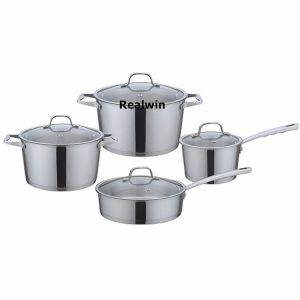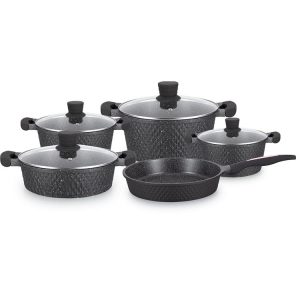The science behind great cooking utensils involves understanding the materials, design, and functionality that contribute to their performance and efficiency in the kitchen. Here are some key scientific aspects of cooking utensils:
- Materials: The choice of materials impacts the cooking utensil’s performance and safety. For example, stainless steel is durable and non-reactive, making it ideal for cookware, while silicone is heat-resistant and non-stick, making it suitable for spatulas and baking mats.
- Heat Conductivity: The ability of a cooking utensil to conduct and distribute heat evenly affects cooking results. Materials like copper have excellent heat conductivity, while others like cast iron have high heat retention.
- Non-Stick Properties: Non-stick coatings on certain utensils prevent food from sticking, reducing the need for excessive oil or butter during cooking.
- Thermal Expansion: Cooking utensils expand when heated and contract when cooled. Understanding thermal expansion helps prevent warping and ensures proper fit and function.
- Ergonomics: The design and ergonomics of utensils influence comfort and ease of use during cooking. Properly designed handles and balanced weight reduce user fatigue.
- Reactivity: Some materials react with certain foods, altering flavors or even causing harmful chemical reactions. Non-reactive materials, like stainless steel or silicone, are preferable for cooking acidic or reactive ingredients.
- Heat Resistance: Cooking utensils must withstand high temperatures without melting or deforming. The heat resistance of materials like silicone ensures they remain safe for cooking.
- Conduction, Convection, and Radiation: Understanding heat transfer mechanisms like conduction, convection, and radiation helps in choosing the right cookware for specific cooking techniques.
- Surface Roughness: The surface texture of utensils affects their non-stick properties and ease of cleaning.
- Mechanics of Cutting and Slicing: The shape and sharpness of knives impact the physics of cutting and slicing food efficiently.
- Thermodynamics: The study of heat flow, temperature, and energy exchange is crucial in cooking utensils, particularly when designing pots and pans to optimize heat distribution.
- Acoustics: The sound of sizzling and boiling in cooking utensils can provide cues to the cook about the food’s readiness and doneness.
- Corrosion Resistance: Materials that resist corrosion are more durable and suitable for prolonged use in the kitchen.
- Magnetism: The magnetic properties of certain materials are relevant when using induction cooktops, which rely on electromagnetic induction for heating.
- Cleaning and Sanitation: The materials and surface properties of utensils affect their cleanability and sanitation.
Manufacturers and designers use these scientific principles to create high-quality cooking utensils that enhance the cooking process, promote even cooking, reduce the risk of food sticking, and contribute to a pleasurable cooking experience. Aspiring chefs and home cooks benefit from understanding the science behind these utensils to make informed decisions when selecting the right tools for their culinary needs.







